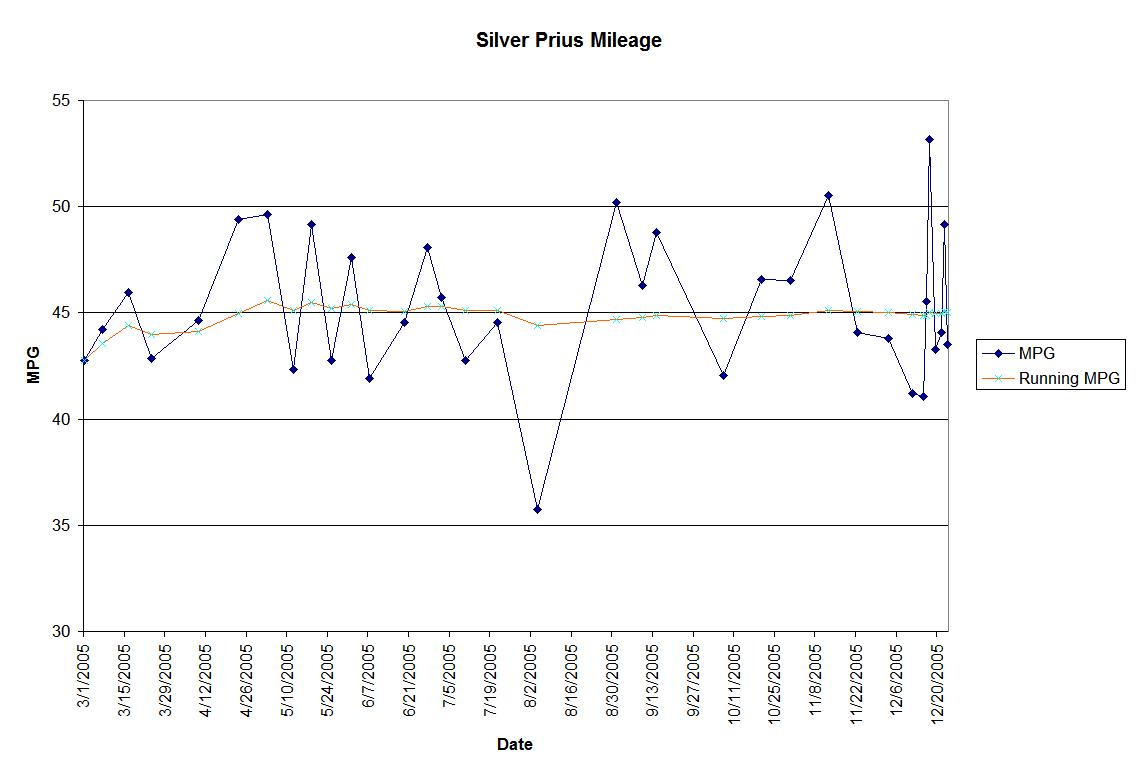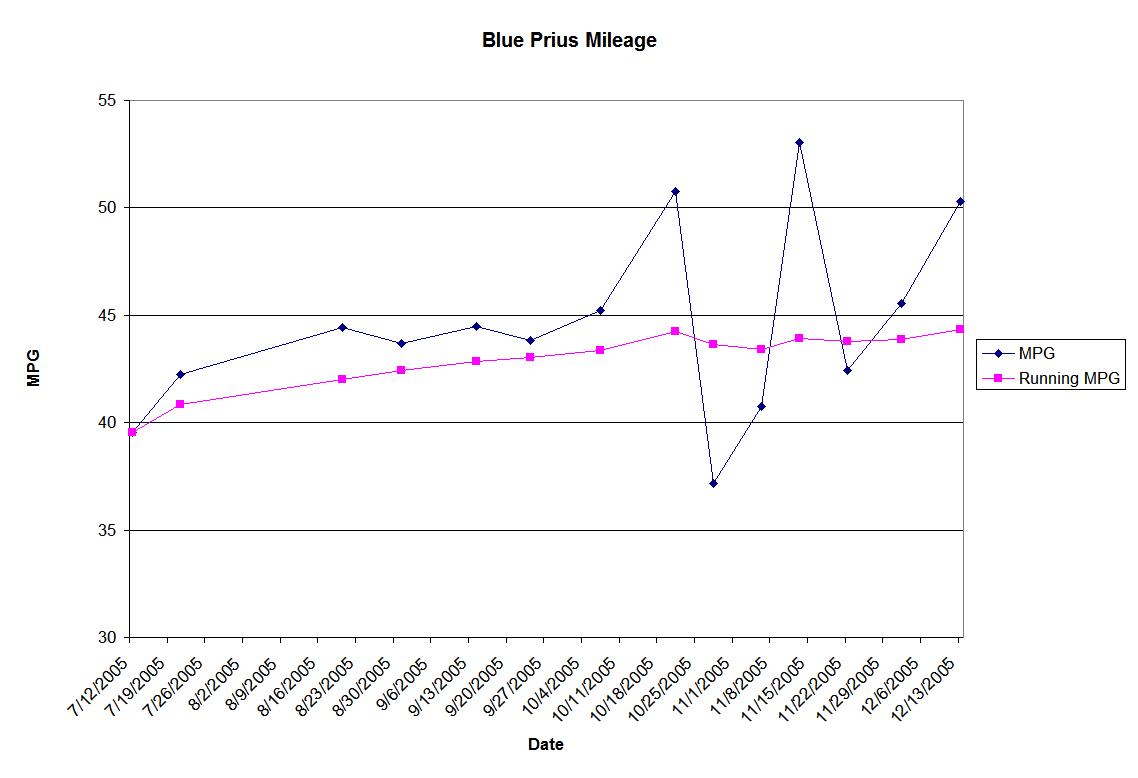For years, I’ve kept track of the mileage I get at every fill-up, with the thought that if it changes significantly, it might mean problems with the car. But I’ve never bothered to look at the mileage closely, until today.
I was curious about the mileage I got on the trip to Tucson, and whether it was significantly different than the mileage I get in normal driving. So I brought in my logbook and started entering data; when I finished, I’d discovered that my cumulative average mileage had been very close to 45mpg since my second fill-up, even though the individual fill-ups gave me very irregular results (especially the one where the automatic shutoff on the pump didn’t work and I pumped 11 gallons, some of which went outside the car instead of in the tank!).

The average mileage for the Tucson trip, 45.9 mpg, was slightly higher than my long-term average of 45.0 mpg, but not by a lot. On the other hand, my average speed on the Tucson trip was undoubtedly significantly higher than my normal speed — most of the distance was on roads with 70 or 75 mph limits, and we spent a lot of time at or above 80 mph (just keeping up with traffic, of course). Around here, the limit is 65, and traffic usually moves about 70.
Diane’s car gets somewhat lower mileage (currently 44.3 mpg long-term), but it’s going up with almost every fill-up.

Naturally, neither of these numbers comes close to the EPA figure of 60 city, 51 highway, 55 combined, but they are much better than the 20mpg or so I was getting from the Saab most of the time!
I’m the same way about tracking my mileage, hoping it will alert me if something goes wrong with the car. You know, it’s surprising what can affect gas mileage. Read my post “Surprising Ways to Get Better Gas Mileage” at:
http://www.wanderings.net/books/node/316/
Let me know what you think.
Keep on Blogging!
Brent
Wanderings.net